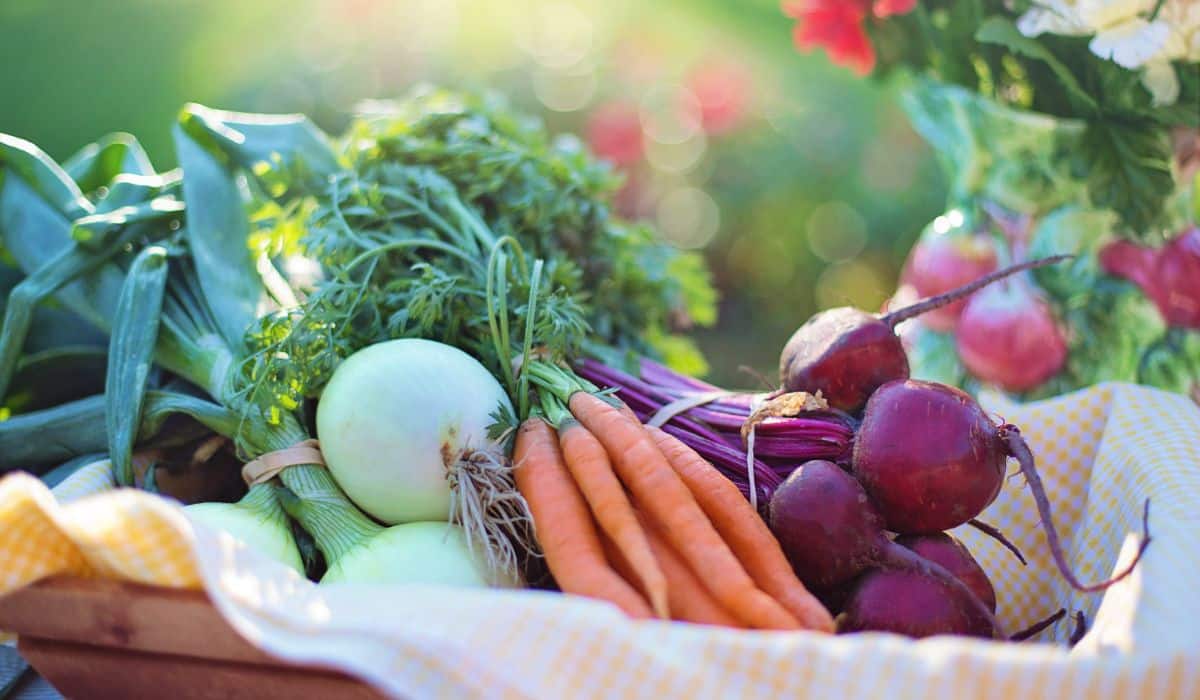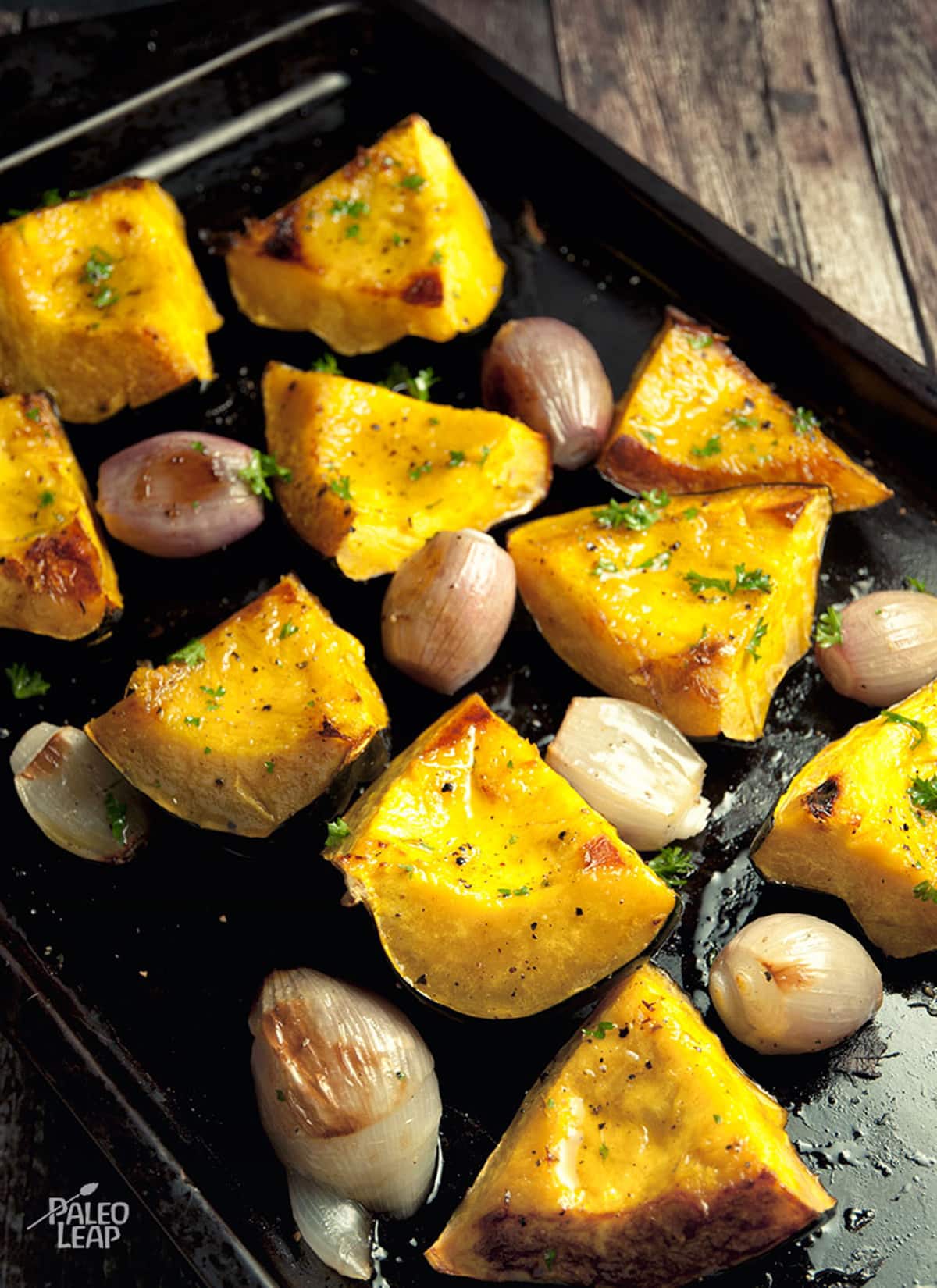
People dislike vegetables for all kinds of reasons. Some of them are supertasters, so they actually taste a bitterness that their vegetable-loving friends don’t experience. Some of them are literally toddlers, and naturally skeptical of new foods. Some of them are grown adults but acting like toddlers. Some of them have texture issues, or other concerns.
But some of them are victims of Boiled Cauliflower Trauma. If you think of vegetables and immediately imagine a tasteless, mushy, amorphous mass of…stuff that you were forced to eat because it was “good for you,” then this is you.
Here’s the thing: not all vegetables are like that. It’s all in how you make them. You can cook vegetables in a way that makes them disgusting, but you can also cook them in a way that makes them good. And this is not a method that needs a lot of arcane knowledge and secret cooking skills to pull off.
Here’s a versatile and almost foolproof way to make vegetables delicious, even if you’re cooking them for the first time: roasting.
Roasting = Vegetable Magic
Roasted vegetables aren’t mushy, bland, or bitter. In fact, there are scientific reasons why most people find them very delicious.
- The Maillard Reaction. In the Maillard reaction, the heat from the oven causes proteins in the vegetables to react with carbohydrates and form that delicious golden-brown outside (it’s also the reason why searing a piece of meat makes it darker). This brings out a complex but slightly sweet flavor in the vegetables.
The Maillard reaction doesn’t start happening until the temperature reaches around 300 F or above. It doesn’t happen when you boil vegetables because covering a pot of boiling water keeps the temperature of the water at the boiling point (212 F) which is too low a temperature for the Maillard reaction to occur. In the oven, the temperature can get higher.
- Dehydration intensifies flavor. Roasting in a hot oven causes some of the water in the vegetables to evaporate. With the water gone, the flavors get concentrated and more intense. This is another reason why roasted vegetables are so much better than boiled.
- Crispiness. As well as intensifying the flavor of the vegetables, dehydration also makes them crispy, especially when it’s combined with the fat from the roasting pan.
- Fat and salt. Fat doesn’t make you fat, and the relationship between eating a normal amount of salt and blood pressure problems is tenuous at best. Both of these ingredients give your vegetables a delicious flavor.
Between the sweetness from the Maillard reaction, the crispiness, the fat, and the salt, you have a winning combination of things that most humans find very delicious. If you’ve read the book Fat, Sugar, Salt, Michael moss argues that these are the exact flavors that food companies use to make processed foods irresistible.
Taste is obviously subjective – there’s probably someone in the world who actually likes the taste of over-boiled cauliflower with no salt. But the vast majority of people like their food to have an actual flavor, and for that, roasted vegetables are a really great bet.
Roasting Vegetables: The How-To
If you’ve never done this before, don’t worry: it’s easy.
What should I roast?
Leafy greens don’t hold up to roasting, but almost any other type of vegetable is good. Squash is a good choice if you’re particularly bothered by bitterness, since it tends to be sweeter to start with and less bitter than something like broccoli or eggplant.
You can roast frozen vegetables as well as fresh. You don’t have to defrost them first; just cut open the bag and spill everything out onto the roasting pan. Just make sure they aren’t crowded on the tray so that there’s enough space for the water to evaporate.
How do I do it?
Here’s the basic method:
- Turn on the oven and set it to around 400 degrees.
- Grease a baking sheet with some kind of Paleo cooking fat.
- Cut the vegetables into bite-sized pieces or a little bigger, and put them on the baking sheet.
- Sprinkle salt and any spices you like (see below) over the vegetables.
- Put the vegetables in the oven until the bottoms are browned (usually 15-30 minutes). Then flip them over or just stir them around and put them back in for the same amount of time.
- Eat and enjoy!
Once you get the hang of this, it takes about 10 minutes of actual work, and the rest of the time you can read a book, cook something else, clean the kitchen, or do whatever.
Spices can be as simple as salt and pepper. Cinnamon is good on squash; Italian seasoning is good on most things if you like it. Chili powder is fun if you like spicy things. You can dramatically change the final result by changing the type of cooking fat or the seasonings that you use, or by adding an acid (e.g. balsamic vinegar on roasted Brussels sprouts, lime juice on roasted cauliflower).
If you prefer following a particular recipe, here are a few very simple ones that all follow this pattern:
- Roasted Mushrooms with Thyme
- Garlic-Roasted Cherry Tomatoes
- Oven-Roasted Garlic Cabbage
- Roasted Acorn Squash and Shallots

Once you’ve got that down (or if you’re looking for a challenge), here are some recipes that add some additional elements or deviate a little from the very basic idea:
- Roasted Ambercup Squash (with sage butter)
- Roasted Cauliflower with Bacon
- Roasted Brussels Sprouts with Balsamic and Cranberries
It can get a little more complex if you want to do something like cooking meat and roasted vegetables in the same pan, or roasting vegetables with bacon, but once you have the basic process figured out, those recipes aren’t much of a stretch.
Of course, there are plenty of other ways to make delicious vegetables. This isn’t a knock on pan-frying, vegetable soup, cooking them into omelets, raw salads, or anything else. But it’s one simple, easy-to-learn method that a lot of people really like, probably because it hits a nice combination of tastes that most humans prefer.
You don’t actually have to choose between “healthy food” and “food that tastes good.” All food should taste good, otherwise it’s just not worth eating. Grimly doing your duty to a plate of grainy, mushy cauliflower isn’t a sustainable way to live, and it’s simply not necessary. Roasting vegetables with salt and fat to taste is one way to make them delicious as well as healthy. There are other ways, but everyone has to start somewhere, so if you’re wondering where to go post-Boiled Cauliflower Trauma, roasting is a great place to start.





Leave a Reply